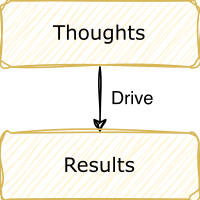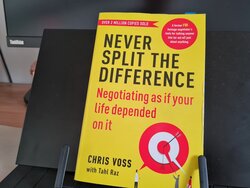
The “Thought Model” is a coaching model to steer a coaching conversation. It helps when the coachee wants to explore new ways of thinking about a problem, which in turn can lead to a changed behavior and the desired results. This post contains the digest of this model and a cheat sheet to ease the application in a conversation.

Coaching is a powerful approach to helping people solve their challenges and supporting their growth. To implement a coaching practice, it’s important to learn how to steer a coaching conversation and what concrete questions and tools can be used in each conversation phase. This post provides a concise and hands-on model and toolbox of the coaching questions and tools I gathered over the years. I compiled everything into a cheat sheet called the “Coaching Steering Wheel”.

One-on-Ones are one of the most important and powerful tools for leaders. If done well, they can help you to spot issues before they escalate, unblock, establish trust, foster a culture of mutual feedback, and ensure the growth of all participants. This post provides a template incorporating the principles for great one-on-ones to achieve this more easily.

I enjoyed reading the classic “Never Split The Difference” by Chris Voss. It contains many tools for negotiations but also for building relationships, trust and dealing with conflicts and emotions. That’s why it is very valuable for engineering managers. In this post, I summarize my key takeaways and lessons learned.

Have you ever applied for an engineering job but got a rejection? Most of the time, the job interview decides about the hire. This post takes you to the other side of the table and prepares you for challenging interviews. We point out which technical skills, traits, values, and cultural aspects are relevant and which questions are asked to assess them. This post is for engineers who want to stand out in their next interview.

I enjoyed reading “Effective Remote Work” by James Stanier. I wrote down my lessons learned and posted them on Twitter and LinkedIn. Surprisingly, the response was very positive which make me very happy. So I made a blog post out of the content to make it persist and easier to find later.

Good performance reviews should be as fair and objective as possible, communicate expectations clearly, and point out concrete areas of improvement. For this, we use a skill matrix as a systematic assessment tool containing skills tailored to the role of a software developer. This post is a hands-on guide to applying a skill matrix in practice.

Management is not something you “just do intuitively” and it will work out by itself. Instead, management is a craft that you can - and should - learn. It’s about knowing the right tools and approaches and learning skills that help you to lead a productive, happy and motivated team. In this post, we visualize these skills as a “Skill Tree” like in a video game. Have a look. It will be fun and insightful!

Especially in bigger teams, establishing and maintaining a common standard for software development is important and challenging. At the same time, it’s crucial to involve the whole team in the creation of the standard to ensure its acceptance and high quality. In this post, I present our approach for this: The regular meeting “Tech Talk” and the team guide.

1-1s are the most important tool for every team manager. If done right, 1-1s can support the report to grow, to become and stay happy, motivated, and productive. However, you need a certain toolkit for 1-1s. This toolkit contains different 1-1 types, records, questions, personal notes, journey maps, and software that can be applied in practice.

During Corona time and short-time work, I appreciated the uninterrupted time to focus on my work at the home office. I felt productive and got things done. For the post-corona time, we can learn from this and establish practices that allow all coworkers to have longer stretches of uninterrupted time. This post is a collection of individual, organizational and cultural approaches to achieve this.

There are some principles in software development that I always try to keep in mind. They guide me when I’m in danger of heading in the wrong direction. That’s why I printed those principles and hung them on a wall in our office. In this post, I share this subjective set of quotes with you. There is also a PDF for download available.

Traditional hierarchy-based feedback flows are limited as they don’t consider the useful feedback of peers. To improve this, I suggest a “Complete Peer Feedback” session: All team members come together and share their appreciation and growth potential for their peers. In this post, I present our experiences with this approach, why we are enthusiastic about it and how you can adopt it.

Employee journey maps are a tool for preparing and structuring staff appraisals. They trigger reflection processes and reveal the employee’s motivation. Moreover, they can lead to interesting insights as they compare the different perceptions of the participants. And the best is: You only need two sheets of paper and a pencil.

Motivation leads to higher performance and satisfaction in the job. But how can we motivate a team of software developers? Sadly, there are common misconceptions about motivation that do more harm than good. Fortunately, science has already discovered the motivators that work: autonomy, mastery, and purpose. This post presents these three pillars of motivation and concrete actions to implement them in software development environments.

Code reviews are powerful means to improve the code quality, establish best practices and to spread knowledge. However, code reviews can come to nothing or harm interpersonal relations when they are done wrong. Hence, it’s important to pay attention to the human aspects of code reviews. Code reviews require a certain mindset and phrasing techniques to be successful. This post provides both the author and the reviewer with a compass for navigating through a constructive, effective and respectful code review.

“Kotlin is great and I really want to use it. But how can I convince my management?” This is the most frequent question I get asked after a talk. In this post, I explain how we introduced Kotlin and show arguments, strategies and tricks that can increase your chances of success. I keep the fingers crossed for you!
















